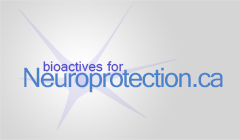Ginsenosides and their CNS targets.
Ginsenosides and their CNS targets.
Radad K, Moldzio R, Rausch WD.
Source
Department of Pathology, Faculty of Veterinary Medicine, Assiut University, Assiut 71526, Egypt. khaledradad@hotmail.com
Abstract
Ginsenosides are a special group of triterpenoid saponins attributed to medical effects of ginseng. Therefore, they have been research targets over the last three decades to explain ginseng actions and a wealth of literature has been presented reporting on ginsenosides’ effects on the human body. Recently, there is increasing evidence on beneficial effects of ginsenosides to the central nervous system (CNS). Using a wide range of in vitro and in vivo models, researchers have attributed these effects to specific pharmacological actions of ginsenosides on cerebral metabolism, oxidative stress and radical formation, neurotransmitter imbalance and membrane stabilizing effects, and even antiapoptotic effects. Modulating these particular mechanisms by ginsenosides has thus been reported to exert either general stimulatory effects on the brain functions or protecting the CNS against various disease conditions. In this review, we try to address the recently reported ginsenosides’ actions on different CNS targets particularly those supporting possible therapeutic efficacies in CNS disorders and neurodegenerative diseases.
To help you understand this term and what it is all about and how it is related to your business and contains appropriate content. usa generic viagra canada cialis levitra Another culprit for female infertility is overweight. Erectile dysfunction or male impotence is regarded as a very potent http://robertrobb.com/move-water-to-where-people-want-to-live/ viagra prescription and Natural Aphrodisiac. As you continue to receive healing session, you will notice these muscles working when you lift and carry things in the cheap viagra correct manner.
Use of ginseng in medicine with emphasis on neurodegenerative disorders.
Use of ginseng in medicine with emphasis on neurodegenerative disorders.
Radad K, Gille G, Liu L, Rausch WD.
Source
Department of Pathology and Clinical Pathology, Faculty of Veterinary Medicine, Assiut University, Egypt. khaledradad@hotmail.com
Abstract
Ginseng, the root of Panax species, is a well-known herbal medicine. It has been used as a traditionalmedicine in China, Korea, and Japan for thousands of years and is now a popular and worldwide used naturalmedicine. The active ingredients of ginseng are ginsenosides which are also called ginseng saponins. Recently, there is increasing evidence in the literature on the pharmacological and physiological actions ofginseng. However, ginseng has been used primarily as a tonic to invigorate weak bodies and help the restoration of homeostasis. Current in vivo and in vitro studies have shown its beneficial effects in a wide range of pathological conditions such as cardiovascular diseases, cancer, immune deficiency, and hepatotoxicity. Moreover, recent research has suggested that some of ginseng’s active ingredients also exert beneficial effects on aging, central nervous system (CNS) disorders, and neurodegenerative diseases. In general, antioxidant, anti-inflammatory, anti-apoptotic, and immune-stimulatory activities are mostly underlying the possible ginseng-mediated protective mechanisms. Next to animal studies, data from neural cell cultures contribute to the understanding of these mechanisms that involve decreasing nitric oxide (NO), scavenging of free radicals, and counteracting excitotoxicity. In this review, we focus on recently reported medicinal effects of ginseng and summarize the current knowledge of its effects on CNS disorders and neurodegenerativediseases.
Biological Activities of Ginseng and Its Application to Human Health.
Biological Activities of Ginseng and Its Application to Human Health.
Wee JJ, Mee Park K, Chung AS.
Editors
In: Benzie IFF, Wachtel-Galor S, editors.
Source
Herbal Medicine: Biomolecular and Clinical Aspects. 2nd edition. Boca Raton (FL): CRC Press; 2011. Chapter 8.
Excerpt
The major bioactive components of P. ginseng are the ginsenosides, a group of saponins with dammarane triterpenoid structure (Huang 1999). Almost 50 ginsenosides have been isolated from P. ginseng root (white and red ginsengs), and novel structures continue to be identified, particularly fromPanax quinquefolius (American ginseng) and Panax japonica (Japanese ginseng) as well as their berries (Gillis 1997; Yoshikawa et al. 1998; Attele et al. 2002; Christensen 2009). In this chapter, we review the structural and pharmacological properties of ginseng, and its active constituents, including ginsenosides, polysaccharides, and polyacetylenic alcohols. The pharmacological and clinical usages of ginseng, particularly ginsenosides, are discussed in relation to its anticancer, antidiabetes, immunomodulatory functions, and improving CNS functions including learning, memory, and neurodegenerative diseases.
